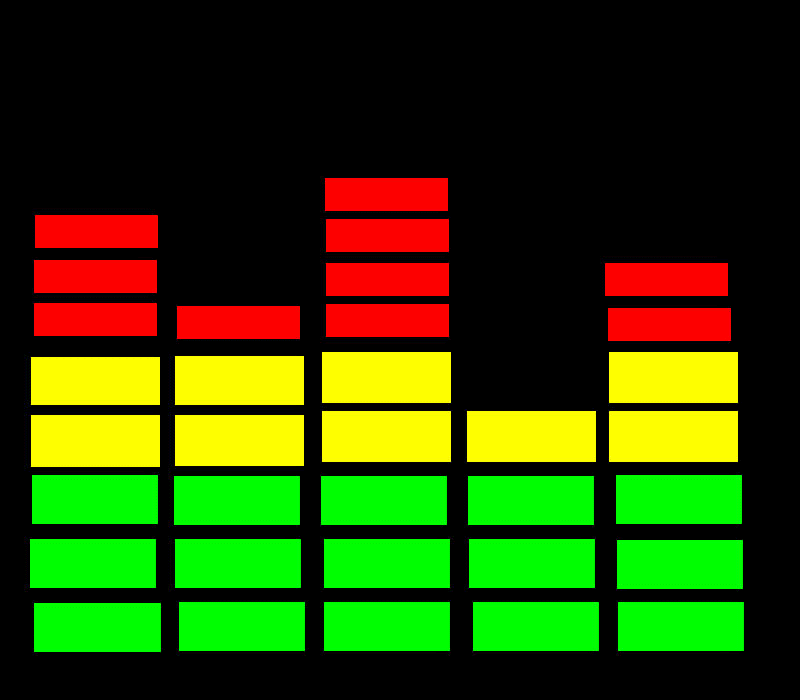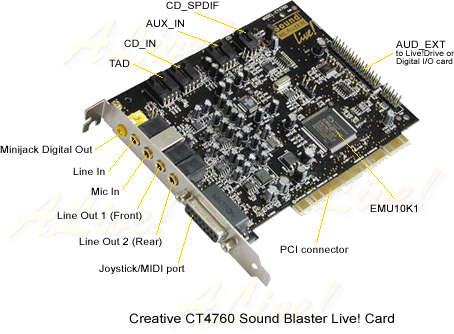TC03 - ICT tools in education (ÁTNÉZNI!: sok link és icon rossz/hiányzik)
Media elements
Digital audio technology
 Learning objectives
Learning objectives
When you have completed this session, you should be able to
- define basic terms of sound.
Digital Audio Technology
![]() The sound (audio wave) is an analog signal. Sound can be converted into electric signals with the help of microphones and this way it can be processed, transmitted, and stored electronically. A binary code must be added to the sound waves (they must be digitized) in order to represent them on the computer. This is done by the sound card. The audio wave is the sum of sinus graphs. The changes of amplitudes in time result a graph which has to be coded.
The sound (audio wave) is an analog signal. Sound can be converted into electric signals with the help of microphones and this way it can be processed, transmitted, and stored electronically. A binary code must be added to the sound waves (they must be digitized) in order to represent them on the computer. This is done by the sound card. The audio wave is the sum of sinus graphs. The changes of amplitudes in time result a graph which has to be coded.
The Characteristics of Sound:
- sound speed: (330-340 m / s in air)
- frequency: the number of oscillation in a time unit. The measurement used is the number of frequency per second (Hz). This determines the pitch.
- period time: the time of one oscillation (the period of a sinus wave)
- intensity: the value of audio output, audio pressure for a surface unit. This is in direct proportion to the amplitude of the audio wave.
- tone: the manner of sound signal in the frequency area (the amplitude and phase relation of different frequency sounds).
- volume: the amplitude of sound oscillation. The value is measured in acoustic decibel. The threshold of hearing is 0 decibel. The threshold of pain is 120 decibel.
 Digitizing is made by “sample taking”. From time to time the amplitude of the graph is determined. The amplitudes measured are rounded off to a whole number. The numeric sequence given represents the sound. This transformation (and the opposite) is done by the sound card.
Digitizing is made by “sample taking”. From time to time the amplitude of the graph is determined. The amplitudes measured are rounded off to a whole number. The numeric sequence given represents the sound. This transformation (and the opposite) is done by the sound card.
Analog sound frequency signal can take any value of amplitude which may also vary constantly in time interval. For digital sound storing in time units samples must be taken from the sound (time quanting). When amplitude samples, produced this way, are divided into determined number of units the size of the amplitude sample can be represented by a number (amplitude quantizing). The numbers received can be stored in digital format.
Analog Recording and Playing of Sound
Recording
- the conversion of sound signal into electric signal. The frequency and amplitude of electric signal corresponds to the original sound signal. ( 1. Sound is detected with a microphone and converted into electric signal ).
- the analogue recording of the electric signal ( 2. the turned up signal is transmitted to the cutting head which creates the tracks on the disc )
Playing
- the detection of recorded signals and conversion into electric signal
- the turn up of electric signals and conversion into sound
Digital Recording of Sound
The only difference compared to analogue recording is in the process of recording.
- conversion of sound signals into electric signals. The frequency and amplitude of electric signal corresponds to the original sound signal
- conversion of analogue electric signal into a digital sequence of signal by sample taking, quantization
- recording of the digital sequence of signals
Sample taking
This is the conversion of analogue electric signals, constant in time and value, into some sequences of discreet impulses. The original analogue signal can only be restored from a sequence of impulse without distortion if the frequency of sampling is at least double of the highest frequency occurring in the original analogue signal (Shannon theory).
Quantization
The amplitudes of impulse sequences sampled are converted into binary numbers. Some determined number of bits is available to provide the values of amplitudes. This is the length of quantization. This can be 8, 16 or 24 bit which is 256, 65 636 or 16 million different values of amplitudes.
Sound Cards:

SoundBluster: introduced sample taking, quantization, and wave chart
Roland MT-32: integrated a ROM on the sound card which contained the wave chart.